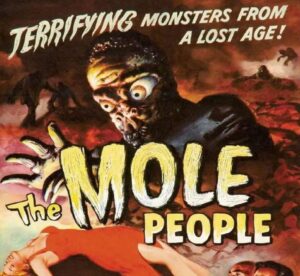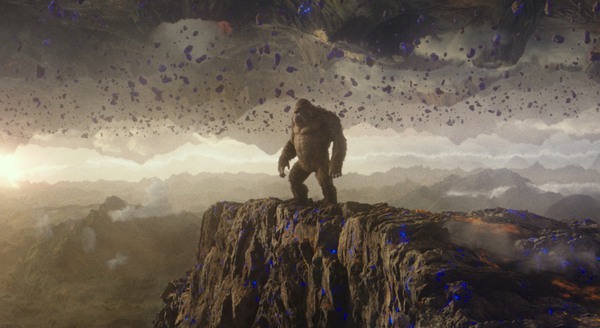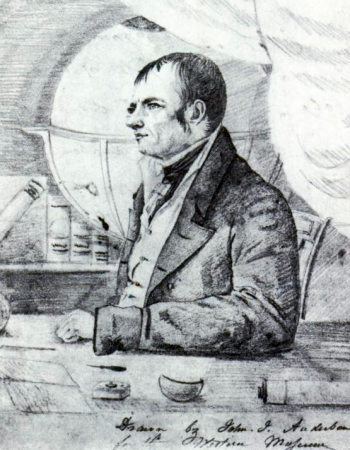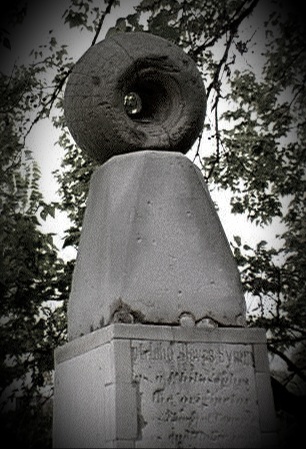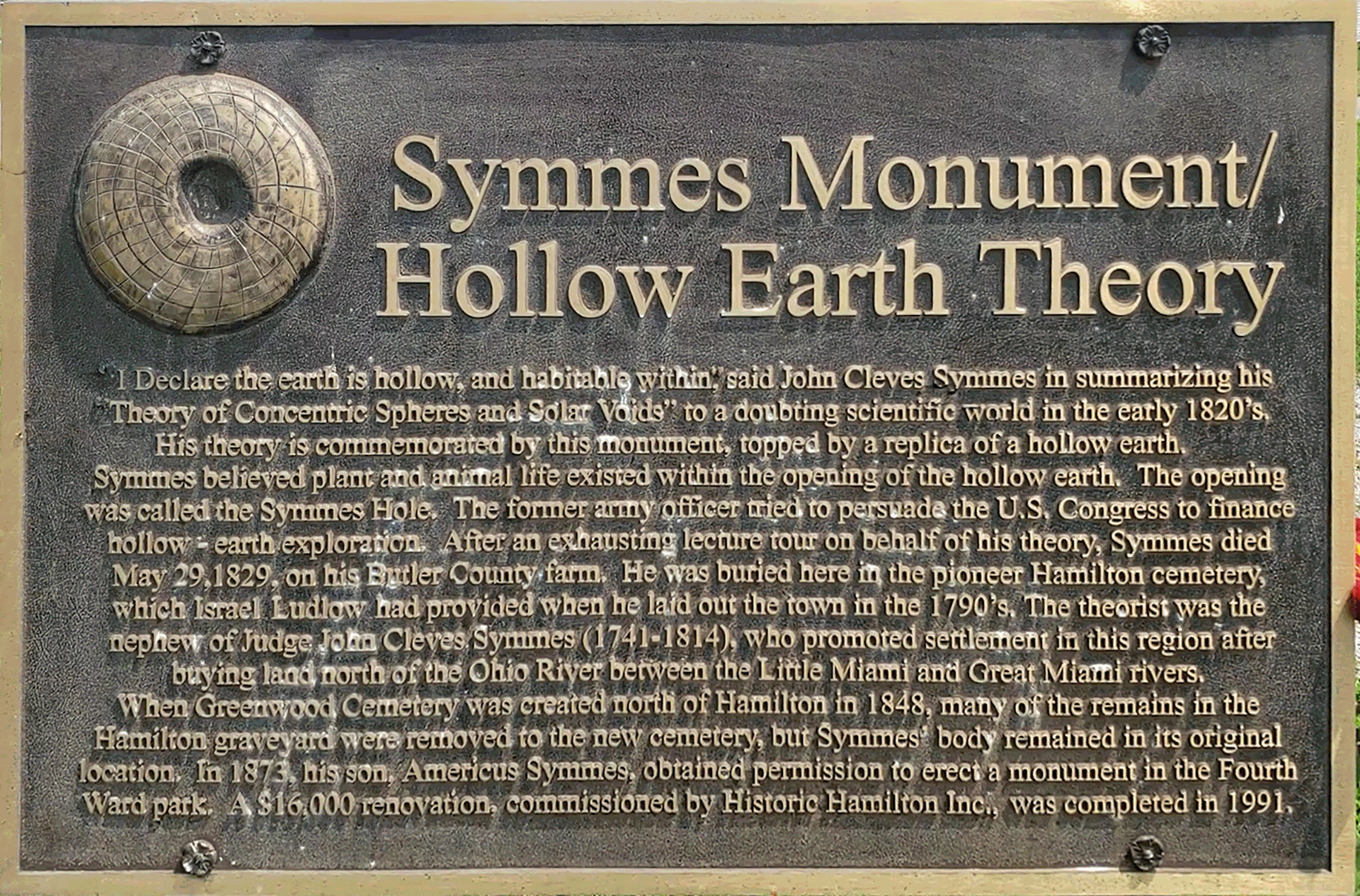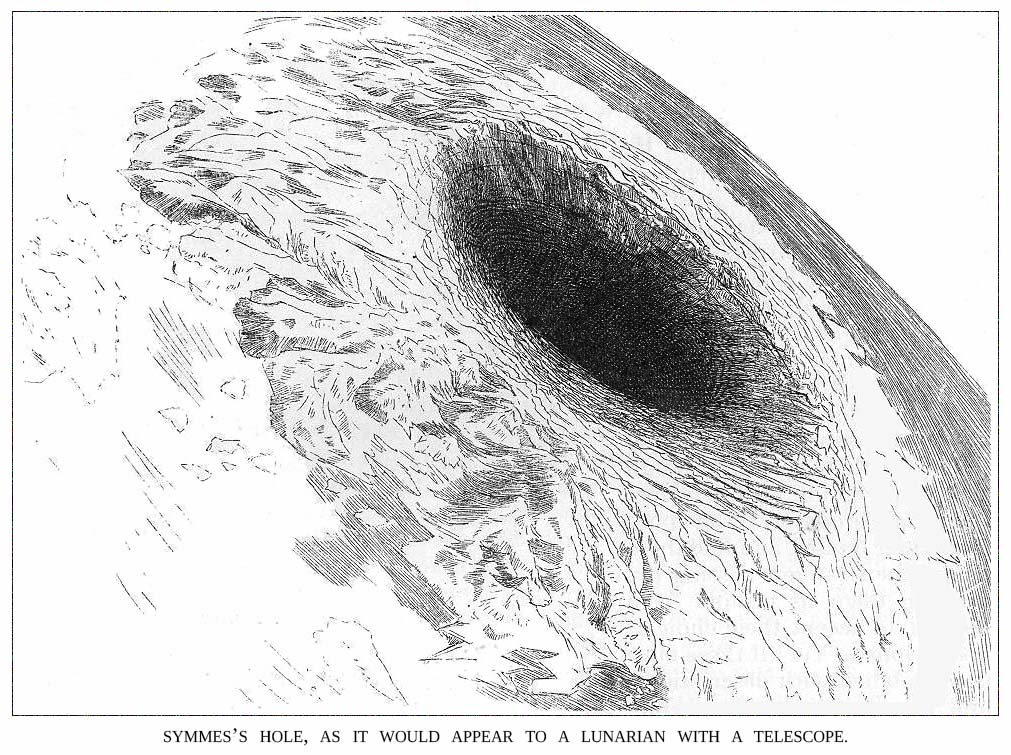Our Logo
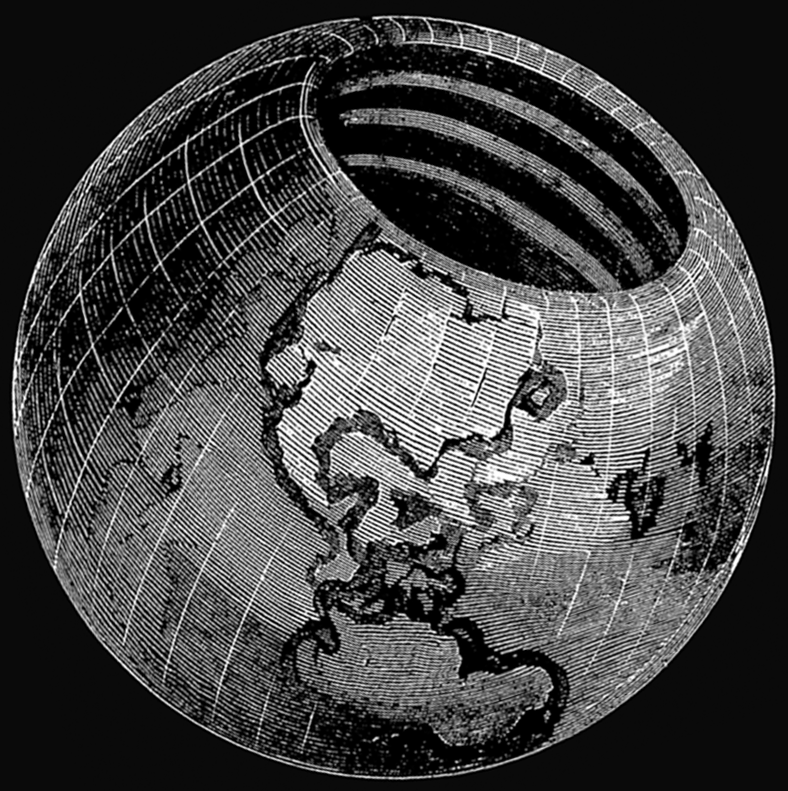
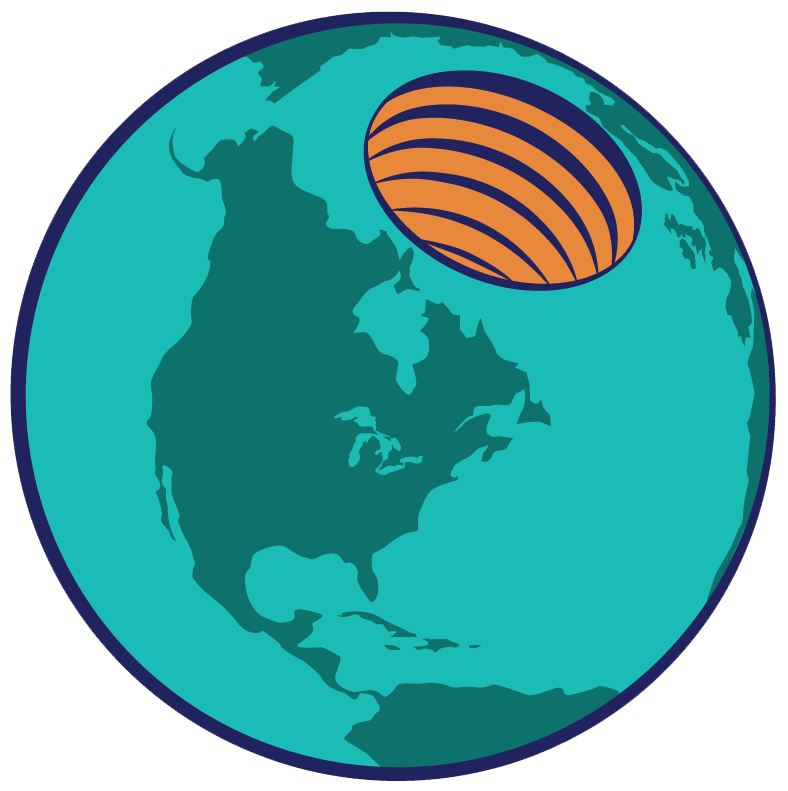
The inspiration for Hollow Earth Creative’s Logo came from old illustrations of Hamilton resident John Cleves Symmes II’s 19th Century Hollow Earth Theory. The image shows a “Symmes Hole” at the North Pole with concentric rings on the interior.
John Cleves Symmes II
John Cleves Symmes Jr. was born in Sussex county. New Jersey, on the 5th of November, 1780. John Cleves Symmes Jr. was a War of 1812 veteran and the nephew of John Cleves Symmes, the man who purchased 311,686 acres of land between the Great Miami River and Little Miami Rivers, and from the Ohio River and 25 miles north.
He died in Hamilton, Ohio on the 29th of May, 1829. His remains were committed to the grave the next day, in the old burying ground at Hamilton, with military honors. They are now covered with a monument, erected by his son, Americus Symmes, a solid structure of freestone, surmounted with a hollow globe, open at the poles, bearing the following inscriptions:
On the north side — Captain John Cleves Symmes was a philosopher, and the originator of “Symmes’ Theory of Concentric Spheres and Polar Voids’. He contended that the earth is hollow and habitable within.
- Excerpted from McBride, James (1871). Pioneer Biography. Sketches of the Lives of Some of the Early Settlers of Butler County, Ohio, Volume II. Cincinnati, OH: D. Appleton and Company. pp. 233–252
The Hollow Earth Theory
“I declare the earth is hollow, and habitable within; containing a number of solid concentrick (sic) spheres, one within the other, and that it is open at the poles 12 or 16 degrees; I pledge my life in support of this truth, and am ready to explore the hollow, if the world will support and aid me in the undertaking.”
- John Cleves Symmes Jr., Symmes’ Circular No. 1
The theory of an interior world has been around for millenia. Many legends and religions incorporate stories of a land beneath our feet. The Greek underworld Hades or Tartarus with the River Styx, the Christian idea of the Pits of Hell, the ancient Celtic belief of the subterranean Tuatha Dé Danann who came from below to spread Druidism to the Celts, the tibetan Buddhist belief of a paradise inside the Earth called Shamballa are but a few examples.
In the 1690’s Edmund Halley (of Halley’s Comet fame) hypothesized that discrepancies in compass readings (between true North and Magnetic North) were caused by an inner shell inside the Earth separated by it’s own atmosphere and with it’s own poles.
Originally, Symmes’ Hollow Earth theory described the world as consisting of five concentric spheres, with our outer earth and its atmosphere as the largest. He envisioned an Arctic opening about 4,000 miles wide, and an Antarctic opening around 6,000 miles wide. Symmes proposed that the curvature of the rim of these polar openings was gradual enough that it would be possible to actually enter the inner earth without being aware of the transition. He argued that due to the centrifugal force of Earth’s rotation, the Earth would be flattened at the poles, leading to a vast passage into the inner Earth. Symmes’s concept of polar openings connecting the Earth’s surface to the inner Earth was to be his unique contribution to Hollow Earth lore. Such polar openings would come to be known as “Symmes Holes” in literary Hollow Earths.
Symmes held that the inner surfaces of the concentric spheres in his Hollow Earth would be illuminated by sunlight reflected off of the outer surface of the next sphere down and would be habitable, being a “warm and rich land, stocked with thrifty vegetables and animals if not men”. He also believed that the spheres revolved at different rates and upon different axis, and that the apparent instability of magnetic North in the Arctic could be explained by travelers moving unawares across and along the verge between the inner and outer earths.
Ultimately, Symmes was to simplify his theory, abandoning the series of concentric inner spheres, and teaching “only one concentric sphere (a hollow earth), not five” by the time he embarked on his lecture tour of the East Coast.
In 1820, Symmes began to promote his theory directly, lecturing on it in Cincinnati and other towns and cities in the region, making use of a wooden globe with the polar sections removed to reveal the inner Earth and the spheres within.
Symmes began to make converts and his ideas began to filter into the public consciousness, and popular support for his proposed Arctic expedition started to build.
- Excerpt from John Cleves Symmes, Jr/Wikipedia
His health was by this time greatly impaired by his constant labors and excitement, and he was reluctantly obliged to give up lecturing. He retired for a time to his native place in New Jersey, where he remained the guest of an old friend of his father until his health was sufficiently restored to enable him to travel homeward. When he reached Cincinnati, in February, 1829, he was so feeble that he had to be conveyed on a bed placed in a spring wagon, to his home near Hamilton. He continued gradually to sink, until released by death on the 29th of May, 1829.
- Excerpt from McBride, James (1871). Pioneer Biography. Sketches of the Lives of Some of the Early Settlers of Butler County, Ohio, Volume II. Cincinnati, OH: D. Appleton and Company. pp. 248
Jeremiah N. Reynolds began a lecture tour with John Cleves Symmes Jr. Reynolds had become a convert to Symmes’ theory that the earth is hollow. The two presented talks on the subject. When Symmes died, Reynolds continued his lectures, which were given to full houses in eastern U.S. cities (with a charge of 50 cents for admission).
Gaining the support of members of President John Quincy Adams’ cabinet, and speaking before Congress, Reynolds succeeded in fitting out a national expedition to the South Pole. However, Andrew Jackson opposed the project, and after he became president it was squelched.
Reynolds garnered support from private sources and the expedition sailed from New York City in 1829. Encountering much danger, the expedition reached the Antarctic shore and returned north, but at Valparaíso, Chile, the crew mutinied. They set Reynolds and the artist John Frampton Watson on shore, where they tramped for the next two years until joining the United States frigate Potomac on it’s way back to the US.
Hollow Earth in Pop Culture
The idea of a Hollow Earth and it’s possible inhabitants stretch back to ancient times, over many cultures and continue today. It received a resurgence after the death of John Cleves Symmes Jr. It became a trope in many works of fiction from the likes of Edgar Allan Poe’s The Narrative of Arthur Gordon Pym of Nantucket, which involves a ship encountering a civilization at the South Pole. Edgar Rice Burroughs (creator of Tarzan and John Carter of Mars) 7 book Pellucidar series that takes place inside the Hollow Earth and many more. Most famously was Jules Verne’s 1864 novel A Journey to the Centre of the Earth. The antagonists follow volcanic tubes to the inside of the Earth which is found to be inhabited by prehistoric creatures.
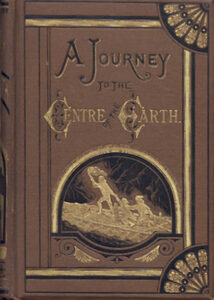
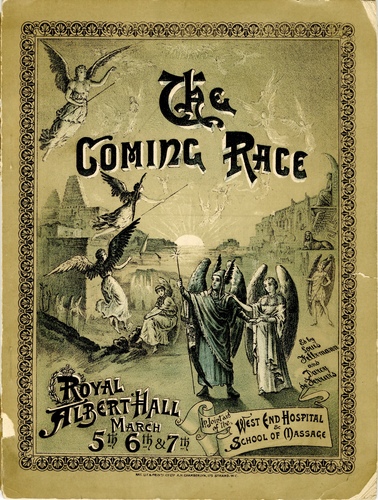
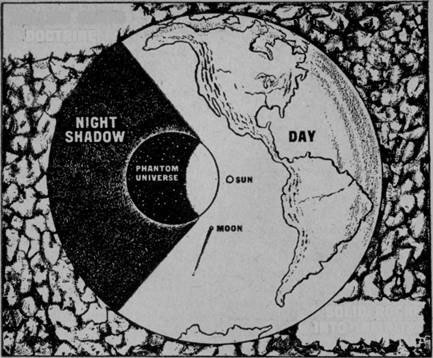
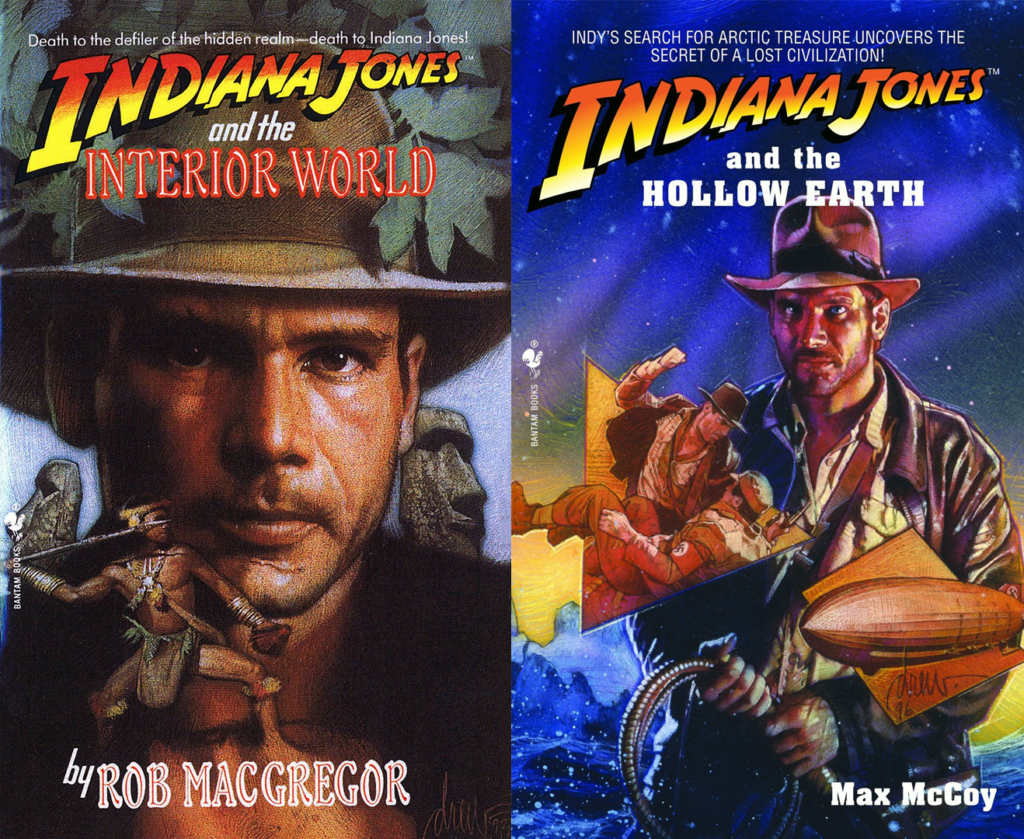
In 1871 Edward Bulwer-Lytton anonymously published Vril, the Power of the Coming Race. the story centers on a man who visits a friend who is a mining engineer and while exploring a mine shaft find a natural breach leading to a deep tunnel. His friend dies in the decent, but the narrator survives. He encounters telepathic angel like beings called the Vril-ya. Their civilization is an advanced technology fueled by a liquid called Vril. The Vril possesses the power to heal or destroy dependent upon who and how one is wielding it.
The book became very popular in the late 19th Century. In March 1891, what has since been billed as the world’s first sci-fi convention entitled “The Vril-Ya Bazaar” was held at the Royal Albert Hall in March of 1891. It was produced as a fundraiser for The West End Hospital and included costumed flying mannequins and early cosplayers. Princess Beatrice and Prince Henry of Battenburg were on hand for the opening. Due to popular demand an extra 2 days were added to the event.
With the increase in popularity and some of Bulwer-Lytton’s other books which had some occult themes, many esotericists of the time believed Bulwer-Lytton himself was an occultist and his stories were not mere fiction but based in fact. This notion came to the forefront when famed occultist of the time, Madame Helena Blavatsky advocated this in 2 of her books. In succeeding decades science fiction writers powered their vehicles and weapons with Vril and tying it to the Lost City of Atlantis.
Recent research has turned up a letter from Edward Bulwer-Lytton to a friend in which he states, “I did not mean Vril for mesmerism, but for electricity, developed into uses as yet only dimly guessed.”
Unfortunately, for decades on, some people continued to believe in the power of Vril and of a superior race. In 1947 German rocket scientist Willy Ley, who emigrated to the US in 1937, wrote an article “Pseudoscience in Naziland” in the magazine “Astounding Science Fiction”. In this article he wrote about a Berlin based group called “Society for Truth” whose sole purpose was to find Vril. Now they knew the society inside the earth was fiction because some of the soon to be Nazis had a different Hollow Earth theory. Ley writes that the theory came about around 1920 and was that the Earth is hollow, and we are inside of it. Along with the sun, moon and a phantom universe that somehow blocks the sun thus causing night. The idea of a Concave Hollow Earth originated in 1869 with Cyrus Teed an upper New York physician. There is an unsubstantiated report that Hitler believed in this theory and had infrared cameras pointing in the sky in hopes of spying on the British fleet.
It is no secret that the Nazis had occult beliefs, and the time period after the Germans lost WW1 when the Nazis were rising to power these ideas were perpetuated by the higher ranks as they tried any and all ideas to regain power. Over time many of the stories get merged and convoluted into historic fantasy. The Thule Society was an actual group founded in Munich just after WW1. Thule was the most northerly point in ancient history and maps. Ultima Thule being “borders of the known world”. Some current fiction extrapolates that to a Symmes’ Hole located at the North Pole. A 1960 French book titled “The Morning of the Magicians” was the first to mention a German group called the Vril Society and linked it to German UFOs. The idea of German UFOs was not new, for years Allied bomber and fighter pilots saw fast moving lights in the sky that they called “foo fighters” and they were believed to be one of the Nazi wonder weapons. This Vril Society was not the same group as the “Society for Truth” from Berlin. There actually is no historic reference for the Vril Society, at least until this book came out.
In 1938 Germany planned to set up a base in Antarctica. Not a military base but a base for whaling ships, so they didn’t have to depend on Norway. Over the years this has evolved in the minds of conspiracy theorists and fantasy authors as a base that was over an entrance of one of Symmes Holes at the South Pole, these are a few among other fantastic stories. Some of these stories also involve the Vril powered Nazi UFOs. Some of the more outlandish stories say Hitler and other high ranking officials escaped to the interior world of the hollow earth. Where there are myths, legends, relics and Nazis, I can only think of one person to take them on…
In the late 90’s the intrepid adventurer Indiana Jones ventured into the Hollow Earth, not once but twice. Not to be outdone by the conflicting Nazi stories of a Hollow Earth, Indy ventured into a concave Interior World in 1992’s Indiana Jones and the Interior World. The entrance to the Interior World in this novel was by means of a portal. In 1997 the famed archeologist was on a race against the Nazi’s to find Ultima Thule by way of a Symmes Hole in the North Atlantic.
The silver screen has also ventured into the Hollow Earth. Some of the more notable films include: The Mole People (1956). A sci-fi classic…or not, depending on your point of view. Symmes Hollow Earth theory is discussed at the beginning of the drive-in classic. One of the most popular adaptations involving the Hollow Earth has been Journey to the Center of the Earth, whether it is the classic 1959 version or the Brendan Fraser led 2008 3D remake, or any of the other other remakes throughout the years.
Most recently the cinematic “Monsterverse” has shown the Hollow Earth in 2019’s Godzilla: King of the Monsters and most recently in 2021’s Godzilla vs Kong. This Hollow Earth is the birthplace of all the giant monsters. It has a unique “gravity membrane” and the gravity inverts in the middle so there is no difference between floor or ceiling, the creatures always will be planted on their respective viewpoint of the ground. This is somewhat similar to the Concave Hollow Earth theory. The area is full of radioactivity allowing the beats to reach titanic proportions.
There has been many other Hollow Earth-centric films over the years and I’m sure there will be many more. It has been an area ripe for legend and myth, good and bad, and one of the biggest proponents is buried right here in Hamilton, Ohio.
